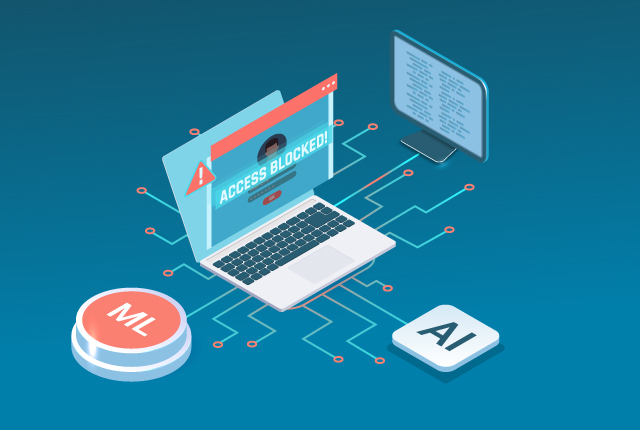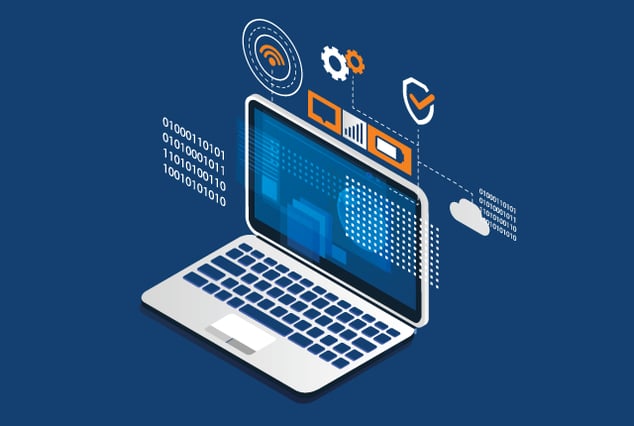
A few years ago, intelligent security tools were just a marketing gimmick. Today, artificial intelligence and machine learning are necessary parts of IT security operations. AI is changing the security testing industry and is making software development safer, more efficient, and more reliable.
The top reason for extensive software testing is related to security or data breaches. Statistics revealed that in 2020 alone, 45% of US companies experienced a data breach, excluding undetected breaches. For that reason, the last few years have seen a revolution in how companies test and fix their software.
One security platform segment that’s increasingly using AI is penetration testing. When talking about AI pen testing products, BAS is often used as a simulation to determine how well a network's defenses would hold up against cyber intrusions.
Traditionally, developers and QA testers would manually spend hours looking for bugs and flaws in a program. With BAS technologies and the addition of AI to detect vulnerabilities, security efforts, and time-consuming testing processes are reduced. In short, relying on AI and ML can help security teams save time, improve test results and deliver faster insights. Cybersecurity is a top priority for companies that rely on software, and the business benefits of quickly releasing software outweigh the costs. In the following article, we’ll discuss what penetration testing is and why you should implement it in your network.
What Is Pen Testing and Why Is It Crucial?
Do you wonder what pen testing is and why you need it? Pen testing (or penetration testing) is a method of applying and evaluating the appropriate security controls to identify any potential weaknesses that put the system at risk. Technically, it’s like black box testing that targets the client side, server side, and network vulnerabilities by trying to exploit them. The goal is to find and fix loopholes beforehand to avoid attacks and prevent network failure.
Threats like malware, phishing, and other security issues have been growing problems for years. For example, almost 15 million records worldwide were exposed due to data breaches in the third quarter of 2022. As such, automated penetration testing helps keep your network secure by revealing potential vulnerabilities for maximum protection and security.
Stages Involved in Penetration Testing
The penetration testing process can be broken down into five stages, namely:
-
Planning: A crucial phase of a penetration testing process is the planning stage. This is where you identify your audit objectives and scope and develop a plan for the tests. It explores a complete picture of the target environment and understanding the operational figures and associated risks.
-
Scanning: In the scanning phase, a tester will interact with the target system to uncover security vulnerabilities. In addition to manual tests like fuzzing and intrusion attempts, targeted systems are scanned using the command line and automated tools.
-
Gaining Access: Once loopholes are identified, the next phase involves exploiting them by gaining access. Tests are conducted to expose every single weakness of the network system.
-
Access Maintenance: The next phase of penetration testing follows the determination of attack vectors and methods the attacker can use to maintain access or maintain persistence. It demonstrates how vulnerabilities can be used to establish a persistent presence.
-
Reporting & Validation: Finally, it’s time to gather and review evidence of the exploited vulnerabilities. Afterward, it delivers reports of all risks and remediation plans related to the detected loopholes. Then, these are subject to a revalidation process, which inspects all closures.
Manual vs AI-enabled vs Automated Penetration Testing
Manual, automated, and AI-enabled penetration testing are methods for security assessments in an organization’s network system. They all provide defense against cyber threats and data breaches. However, the differences between them depend on how they’re conducted. Manual pen testing is performed by human experts in the field. Meanwhile, automated pen testing is done by machines but needs human intervention. AI-enabled pen testing is typically machine learning embedded software.
Moreover, manual testing usually requires a huge amount of resources to be invested, compared to automated testing. The requirements of each project are also specific, so you need more highly skilled professionals to do the work. Automated testing, on the other hand, holds onto the latest tools.
Leveraging AI and Machine Learning for Penetration Testing
When it comes to penetration testing and cybersecurity risks, using AI and ML can help you improve your current processes. Besides speed and accuracy, these tools boost the chance of preventing data breaches in your system. Focusing on business growth, organizations are generally concentrating on the security of their infrastructure. The pressure is increasing, and so are the opportunities for cyber attacks.
Manual testing is primarily dependent on human effort, but even automated penetration testing is highly dependent on humans to get effective results. At the same time, it’s not sufficient to rely on automation tools only as they don’t guarantee repeatability and can be subject to human error.
However, the use of machine learning and AI can help minimize the human factor in the process. Like automated pen testing, it also introduces cognitive automation, which greatly reduces human dependency. It takes the security industry to new heights by improving accuracy and adding contextual intelligence. Let’s take a look at how AI and ML pen testing affects the following:
-
Footprinting:- Footprinting is one of the first stages in penetration testing. It involves gathering as much information about the target system as possible. It employs several passive methods to gather all publicly available information, thereby increasing the chances for successful penetration.
Typically, this process is traditionally accomplished manually and can be time-consuming. However, integrating ML and AI technologies automates mundane processes, grows with the project, and delivers best-in-class results.
-
Scanning:- The amount of information collected in the footprinting phase is huge. Additionally, it requires the ability to be timely scanned to identify potential vulnerabilities. The complexity of manual scanning is inadvisable, and automation would save you hours. However, it would not bring about much improvement in efficiency and reliability.
AI and ML enhance the scanning process by allowing automated tools to scan faster, more efficiently, and with greater accuracy. They allow for more thorough scanning by removing human error from the equation. The tools also scan massive chunks of information and filter out irrelevant data, delivering actionable insights.
-
Threat Analysis:- Given the large quantities of information, performing threat analysis can be a very challenging process. This is especially true when the manual approach is used and the resources allotted to this function are limited. However, integrating ML and AI into the process can bring cognitive abilities into the process to enhance reliability and effectiveness. They allow for a greater understanding of data, including user behavior, network activity, and other factors that can help with threat analysis. Besides, it can help identify suspicious activity that’s indicative of the early stages of a cyber attack, helping your organization effectively detect and predict attacks before they can cause significant damage.
-
Vulnerability Analysis:- As cyber threats are getting more complex and escalating at a faster rate, it’s challenging for even an experienced IT professional to manage risks. Cyber hackers make their attacks impending, sophisticated, and impossible to predict. As such, the use of AI and ML in this stage is necessary.
With the information at hand, it becomes easier to identify and systematically segregate vulnerabilities depending on their severity levels. As a business, you can use data-driven ML models to prioritize remediation efforts and intelligently schedule patching cycles. At its core, enabling ML and AI in the process can reduce cost while increasing the reliability and protection of your most vulnerable assets.
-
Exploiting Vulnerabilities:- This stage is used to initiate attack operations. In this stage, QE engineers take control of many network devices and launch various attacks on the system.
Multiple vulnerabilities in a system can make it challenging to exploit the system manually. With ML and AI, exploits like SQL injection and cross-site scripting can be conducted faster than ever. Security testers use these vulnerabilities to escalate privileges, intercept traffic, steal data, and other actions to find out how much damage a hacker could do.
Furthermore, machine learning algorithms learn from past data about how to identify patterns that indicate security issues. This allows them to identify vulnerabilities in code and other sources before they can be exploited by hackers or cause damage to the system.
Tools for Automated Penetration Testing
Here is our list of the best penetration testing tools:-
-
Wireshark: This tool is a free, open-source multipurpose network traffic analysis tool. It’s used for network troubleshooting, analysis, software, and protocol development.
-
Zed Attack Proxy: Written in Java language, the tool is an open-source and robust security scanner that allows you to find vulnerabilities in your web applications.
-
OpenSCAP: It’s an open-source security guide that helps you build, manage, and maintain secure systems.
-
Sqlmap: This tool allows you to exploit vulnerabilities in SQL databases.
-
Nmap: Stands for Network Mapper, Nmap is a free and open-source utility for network discovery and security auditing.
Conclusion
At the end of the day, AI-enabled pen testing is an efficient and cost-effective way to ensure your company’s network is protected from critical vulnerabilities. Our advanced AI and machine learning technologies will help eliminate cybersecurity blind spots and automate routine business processes. This way, you can focus on what matters most — your clients and their needs. If you need help assessing and ensuring your security posture, you can connect with our experts at QASource.


